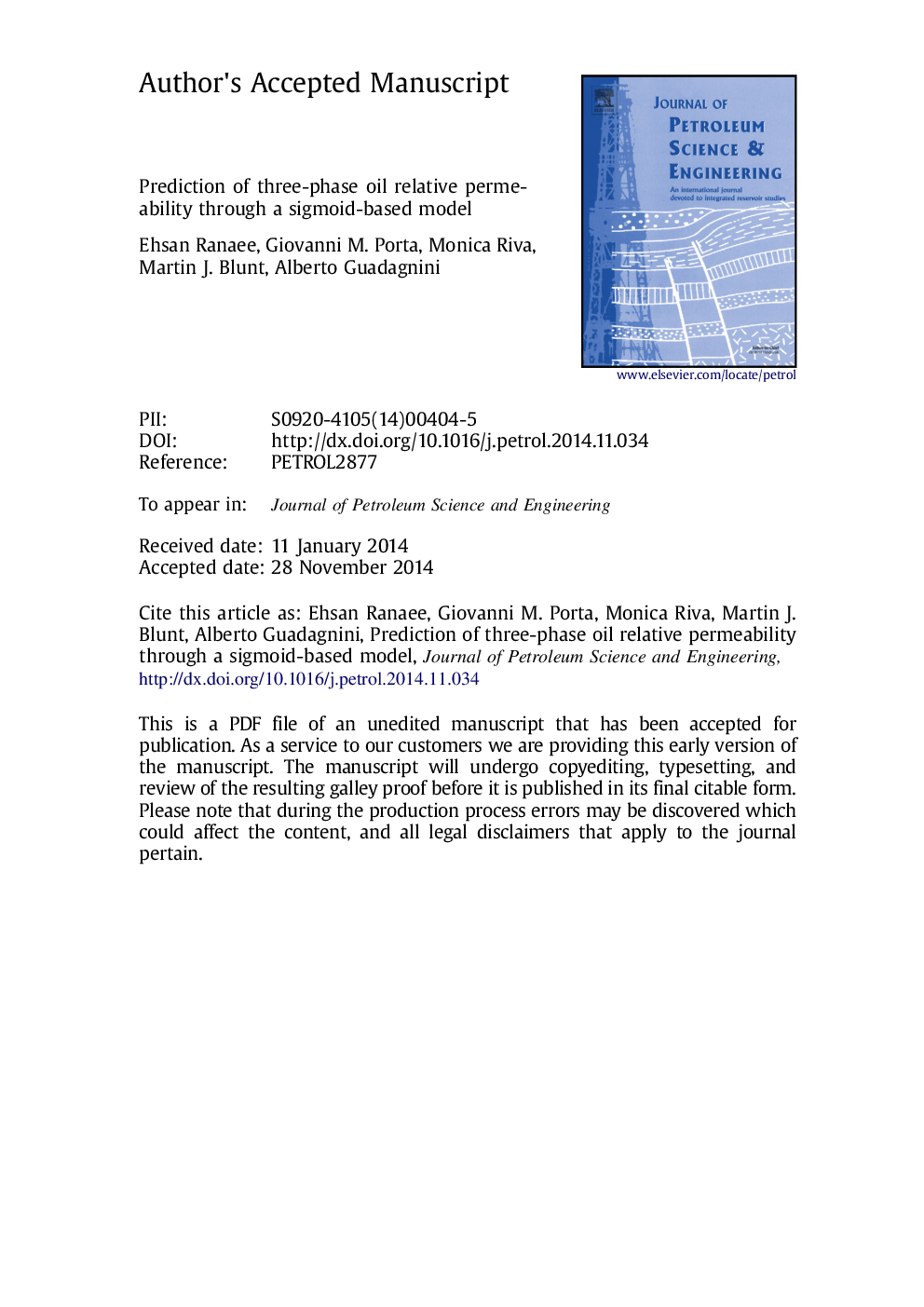| Article ID | Journal | Published Year | Pages | File Type |
|---|---|---|---|---|
| 8126706 | Journal of Petroleum Science and Engineering | 2015 | 38 Pages |
Abstract
We present a novel methodology for the prediction of three-phase oil relative permeability, kro, through a sigmoid-based model. This modeling choice allows us to incorporate key effects of the pore-scale phase distributions into the proposed effective empirical model for kro. Our sigmoid-based model is able to reproduce: (i) oil remobilization induced by gas injection in water-wet media; (ii) a smooth transition towards the layer-drainage regime for low oil saturations; and (iii) the consequent reduction of residual oil saturation in a three-phase system. The ability of our model to embed the effects of these processes into the estimation of oil relative permeabilities is discussed through comparison with previous experimental measurements. Two different procedures, respectively aimed at describing primary gas injection and secondary waterflooding, are proposed for data analysis and interpretation. A remarkably good agreement between model predictions and direct three-phase relative permeability measurements from the literature is observed when model parameters are estimated solely on the basis of two-phase information. The robustness of the proposed methodology is also assessed by comparing estimates of model parameters based on two-phase data against their counterparts estimated within a Maximum Likelihood framework on the basis of three-phase measurements.
Related Topics
Physical Sciences and Engineering
Earth and Planetary Sciences
Economic Geology
Authors
Ehsan Ranaee, Giovanni M. Porta, Monica Riva, Martin J. Blunt, Alberto Guadagnini,
